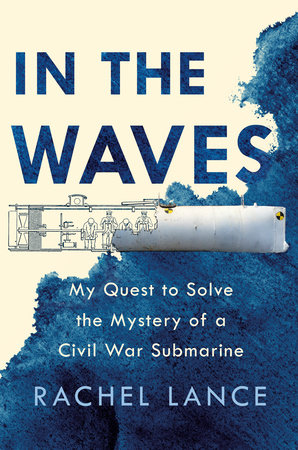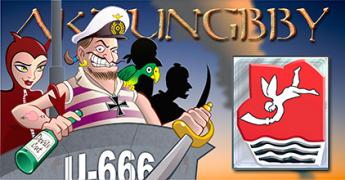|
Gefallen Engel U-666
Join Date: Jul 2013
Location: On a tilted, overheated, overpopulated spinning mudball on Collision course with Andromeda Galaxy
Posts: 27,861
Downloads: 22
Uploads: 0
|
 This being a submarine forum: required reading!
This being a submarine forum: required reading!
 this just out and required reading imho: history's first successful sub attack....and a Confederate one at that! this just out and required reading imho: history's first successful sub attack....and a Confederate one at that!
Quote:
How a determined scientist cracked the case of the first successful—and disastrous—submarine attack
On the night of February 17, 1864, the tiny Confederate submarine HL Hunley made its way toward the USS Housatonic just outside Charleston harbor. Within a matter of hours, the Union ship’s stern was blown open in a spray of wood planks. The explosion sank the ship, killing many of its crew. And the submarine, the first ever to be successful in combat, disappeared without a trace.
For 131 years the eight-man crew of the HL Hunley lay in their watery graves, undiscovered. When finally raised, the narrow metal vessel revealed a puzzling sight. There was no indication the blast had breached the hull, and all eight men were still seated at their stations—frozen in time after more than a century. Why did it sink? Why did the men die? Archaeologists and conservationists have been studying the boat and the remains for years, and now one woman has the answers.
In the Waves is much more than just a military perspective or a technical account. It’s also the story of Rachel Lance’s single-minded obsession spanning three years, the story of the extreme highs and lows in her quest to find all the puzzle pieces of the Hunley. Balancing a gripping historical tale and original research with a personal story of professional and private obstacles, In the Waves is an enthralling look at a unique part of the Civil War and the lengths one scientist will go to uncover its secrets.
|
As a black powder shooter and civil war re-enactor myself and  CSS Hunley poster myself https://www.subsim.com/radioroom/showpost.php?p=2284625&postcount=1059:
CSS Hunley poster myself https://www.subsim.com/radioroom/showpost.php?p=2284625&postcount=1059:
From today's W.S.J.: Most people don’t understand explosions. In action movies, we see heroes, propelled by fireballs, get back up, then brush themselves off before jumping back into the fray. But in the real world, the pressure wave from a nearby explosion can kill you without even knocking you over. “Our action hero, thrown across the room by the winds of an explosion,” writes Rachel Lance in her book “In the Waves,” “is not standing up and dashing off after a mild back injury.” Instead, the blunt trauma to his lungs will kill him “100 percent of the time.”
Ms. Lance would know. She’s a biomedical engineer who studies blast trauma and pulmonary physiology. Her book, which centers on the research at the heart of her Ph.D. dissertation, unravels the mystery surrounding the death of a Civil War submarine crew.
In the Waves
By Rachel Lance
Dutton, 352 pages, $28
In 1864, H.L. Hunley became the first submarine to sink an enemy ship. But the Confederate submersible never returned home. When the 40-by-4-foot tube was recovered in 2000, the remains of all eight crew members were still seated at their stations, showing little sign of struggle or trauma (aside from 100-plus years of decomposition). How did they die?
One popular theory suggests that they asphyxiated from either too little oxygen or too much carbon dioxide. CO 2 poisoning would have been the quicker of the two killers, but there still would have been several minutes between the first painful symptoms and the crew’s ultimate demise—yet there were no signs the crew even attempted to open the bilge pumps to surface for fresh air. “Nobody sinks their teeth into their own tongue in agony”—as sufferers of CO 2 poisoning have done—“yet sits still, one hatch door away from freedom, without taking action,” Ms. Lance writes. So asphyxiation is ruled out.
Then there is the lucky-shot theory. A hole in the sub looks to have appeared around the time of the sinking. Perhaps a Union bullet hit and sank the Hunley. But again, the crew made no moves to avoid drowning in the several minutes they would have had before death.
Ms. Lance prefers another theory: that the crew was killed by a blast wave. Central to this idea—first proposed in 1877 but without enough supporting evidence at the time to keep it beyond dispute—is the thin spar, 16 feet long, which was attached to the front of the hand-cranked sub and used to hold a bomb: 135 to 200 pounds of black powder encased in a copper canister the size of a beer keg. Contact between the bomb and the underside of a ship would trigger the device.
On the night of Feb. 17, 1864, the Hunley set out to destroy the USS Housatonic, one of several Union warships enforcing a blockade around Charleston, S.C. When the bomb on the spar hit the ship, it blew a hole in the Housatonic’s hull and sank it in about five minutes, killing five of its hundred-plus crew. But the spar was angled slightly downward from the Hunley, so the pressure wave traveled through the water to the submarine’s underside—mere feet away—causing its wrought-iron belly to flex like a trampoline and transmit the wave to the air inside the sub. There, according to Ms. Lance’s scaled-down re-creation of the event, the pressure wave bounced around like a ripple in a bathtub, amplifying itself where the peaks overlapped and hitting the confined men from all sides. As Ms. Lance writes, “The Hunley was inadvertently designed to kill her own crew.”
“In the Waves” is one part science book, one part historical narrative, one part memoir. The author vividly describes the physics and physiology of explosions, shock waves and asphyxiation, often addressing morbid topics with bemused detachment. Pressure waves destroy lungs and intestines because they travel through fluid faster than air, decelerating and destructively dissipating their energy when they hit air pockets such as lung alveoli. “The phenomenon of this extreme slowdown in the water-air maze is called ‘the hot chocolate effect,’ ” we are told, “after the delightful frothy bubbles of the delicious beverage.”
We learn of the Hunley’s construction and testing by privateers, led by Horace Lawson Hunley, who died in one of the two training accidents that gave the vessel its nickname “the peripatetic coffin.” We learn the history of black powder, submarines, trans-Atlantic cables, the Civil War and characters such as George Washington Rains and Gabriel Rains—“the Bomb Brothers”—who manufactured munitions for the South.
The author paints for us a portrait of herself as a sleep-deprived, motorcycle-riding, cake-baking, scuba-diving pursuer of truth at any cost. We follow her in novelistic detail (“My forkful of eggs froze on its way to my mouth”) as she befriends a Civil War re-enactor willing to shoot at metal plates with his musket to help shatter the lucky-shot theory. She commissions a metalworking artist to build a scale model of the Hunley (dubbed CSS Tiny), meets an ATF agent to fill her trunk with sacks of black powder, uses homemade baked goods to entice a farmer to let her blow stuff up in his pond, and spends hot days in the sun and cold nights in the lab blasting and measuring. We also learn a bit of technical jargon, like SWAG, for “scientific wild-ass guess.”
Some of Ms. Lance’s struggles are common among graduate students. One epigraph quotes another former Ph.D. student: “My adviser had a saying: You have to believe that Sisyphus was happy.” Describing her need to collect clean data on deadline, the author writes: “Perhaps this was a small taste of the desperation that the [Charleston-defending] crew of the Hunley felt. They knew how dangerous their boat was, but they were starving, and they were being bombed nightly.”
Some blockades were unique to her pursuit. On departing the Hunley museum, where its archaeologists denied Ms. Lance basic information about the displayed submarine, “I looked back up at the sign urging me to help ‘solve the mystery.’ ” Apparently they weren’t that curious. Eventually they offered to share their guarded knowledge, on condition that she sign a nondisclosure agreement—a death knell for hopes of scientific publication. She declined, but has the final word with a tight jab in the book’s epilogue: “When I last toured the museum I was unable to find, even in the sections dedicated to general Civil War history, a single mention of slavery.”
In the end, Ms. Lance concludes that, with a 200-pound charge—given its unfortunate placement—each man on the Hunley would have had a 99.9% chance of “serious injury” and a 92% chance of immediate death, plus a 46% chance of traumatic brain injury. Just as harrowing, and inspiring, is the depiction of the scientific process and its bracing danger of death by a thousand cuts.
__________________

"Only two things are infinite; The Universe and human squirrelyness; and I'm not too sure about the Universe"
Last edited by Aktungbby; 05-02-20 at 01:14 PM.
Reason: This being a submarine forum: required reading!
|